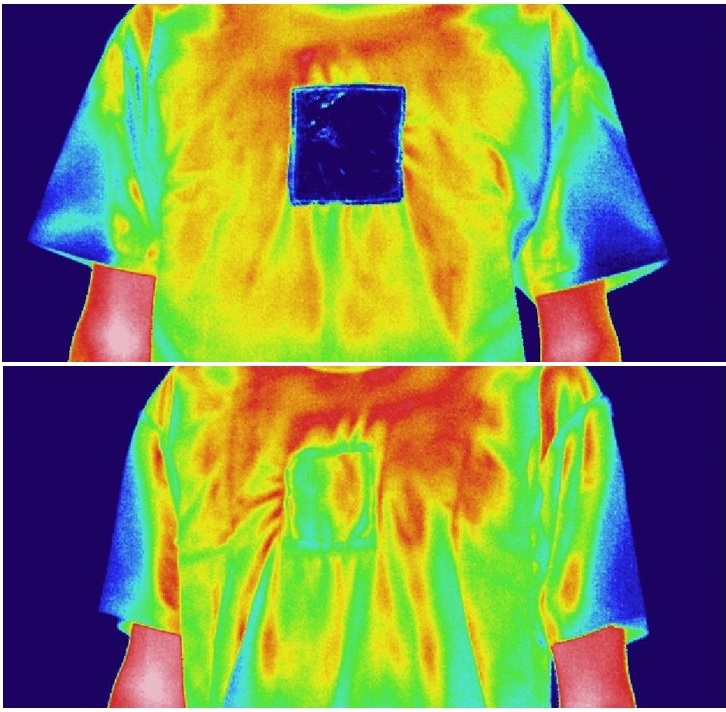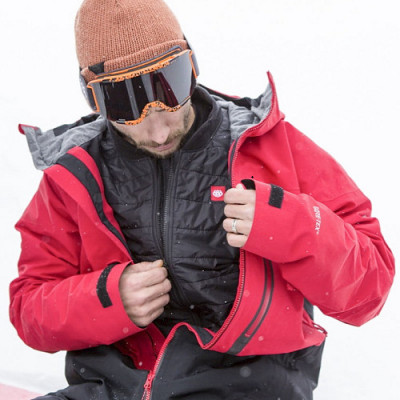Previous attempts to develop such sophisticated textiles for outdoor use have generally focused on either capturing thermal radiation or dispersing it. To integrate the two, Qiang Li, Min Qiu and colleagues made a layered fabric made of porous fibrous polymers. To trap warmth in the cold, they coated the heating side in zinc and copper nanoparticles to absorb solar energy and keep in thermal radiation from the body.
To release heat in the hot sun, they placed a hierarchically porous structure on the cooling side to reflect sunlight and dissipate human body radiation. In the sun, the heating side increased a simulated skin’s temperature by as much as 14 F more than did black cotton. With the cooling side out, the textile dropped the temperature by 11 F compared to white cotton.

Thermal imaging shows how a square of the new textile (dashed lines) traps heat in heating mode (top), while reflecting it in cooling mode (bottom).
In night tests, the heating side warmed the simulated skin by 5 F more than black cotton, but the cooling side did not result in a lower temperature. By attaching a small thermoelectric generator to the textile, the researchers could harness the temperature gradient between its inner surface and skin to produce a small amount of electricity.
They say the textile is easy and inexpensive to fabricate and has breathability comparable to cotton. This textile creates new possibilities for many technologies, such as multi-functional camouflage or clothing that can generate electricity to someday power wearable electronics, the researchers say.
Read the original article on American Chemical Society (ACS).
